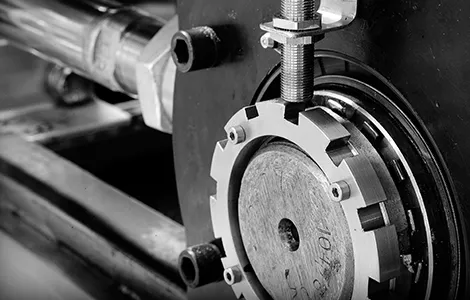The Importance of Tracking Rollers in Maintaining Steel Belt Alignment
July 09, 2024
The Importance of Tracking Rollers in Maintaining Steel Belt Alignment
When working with industrial conveyor systems, the correct alignment of steel belts is a cornerstone of operational efficiency and durability. A key player in maintaining this alignment is the often-overlooked tracking roller. Understanding the function and benefits of tracking rollers can significantly enhance the performance and longevity of conveyor systems, making them a critical component for any industry reliant on material handling.
Understanding Tracking Rollers
Tracking rollers are designed to ensure that conveyor belts remain aligned and centred on the conveyor system. These rollers adjust their position in response to the movement of the belt, applying corrective forces to steer the belt back to its intended path. This continuous self-correction mechanism is vital for preventing belt misalignment, a common issue that can lead to significant operational disruptions.
The Mechanics Behind Tracking Rollers
Tracking rollers operate based on a simple yet effective principle. As the belt moves, the tracking roller senses any deviation from the centreline. It then adjusts its angle to counteract this deviation, guiding the belt back to the centre. This adjustment is achieved through a combination of mechanical and, in some advanced systems, automated controls that continuously monitor and correct the belt's position. This automatic adjustment is crucial for maintaining alignment under varying loads and speeds, which are typical in most industrial applications.
Benefits of Proper Belt Alignment
• Reduced Wear and Tear: One of the primary advantages of using tracking rollers is the reduction in wear and tear on the belt. Misaligned belts can experience uneven wear, leading to premature failure. By keeping the belt properly aligned, tracking rollers help distribute the wear evenly, extending the belt's lifespan significantly.
• Lower Maintenance Costs: Misalignment issues often require frequent maintenance, leading to increased downtime and higher costs. Tracking rollers reduce the frequency of these interventions by maintaining consistent belt alignment. This not only lowers maintenance costs but also minimises operational disruptions.
• Improved System Efficiency: A well-aligned belt ensures that the conveyor system operates smoothly and efficiently. This reduces the overall energy consumption of the system, as it does not have to work harder to compensate for misalignment. Improved efficiency translates to better productivity and lower operational costs.
• Enhanced Safety: Misaligned belts can pose significant safety hazards, including the risk of belt slippage or damage to the conveyor structure. By maintaining proper alignment, tracking rollers help mitigate these risks, ensuring a safer working environment.
• Increased Productivity: Consistent alignment facilitated by tracking rollers ensures that the conveyor system runs without interruptions, thus boosting overall productivity. Less downtime for repairs and adjustments means more uptime for productive operations.
Implementing Effective Tracking Systems
At PACE, we recognise the critical importance of conveyor belt alignment. Our advanced tracking systems, such as the PACEMatic©, are designed to provide precise control over belt alignment. These systems utilise state-of-the-art technology to continuously monitor the position of the belt and make real-time adjustments to ensure optimal performance and minimal wear.
Our tracking systems are tailored to meet the specific needs of various applications, from food processing to heavy industrial use. By incorporating advanced features such as automated adjustments and real-time monitoring, we provide solutions that not only maintain alignment but also enhance the overall efficiency and safety of conveyor operations.
Real-World Applications and Success Stories
Consider the food processing industry, where maintaining hygiene and efficiency is paramount. Misaligned belts can lead to product contamination and inconsistent processing times. By using advanced tracking systems, companies can ensure that their conveyor belts remain properly aligned, maintaining the integrity and safety of the food products.
In heavy industries such as mining and construction, the robustness and reliability of the conveyor system are crucial. Here, tracking rollers prevent costly downtime caused by misaligned belts, ensuring continuous and efficient operation.
Conclusion
The importance of tracking rollers and tracking systems in maintaining steel belt alignment cannot be overstated. They play a pivotal role in enhancing the reliability and efficiency of conveyor systems. By reducing wear and tear, lowering maintenance costs, improving system efficiency, and ensuring safety, tracking rollers are indispensable for any operation relying on steel belt conveyors.
For more detailed information on how PACE’s tracking rollers and advanced conveyor systems can benefit your operations, discover the PACEMatic Steel Belt Tracking System.

